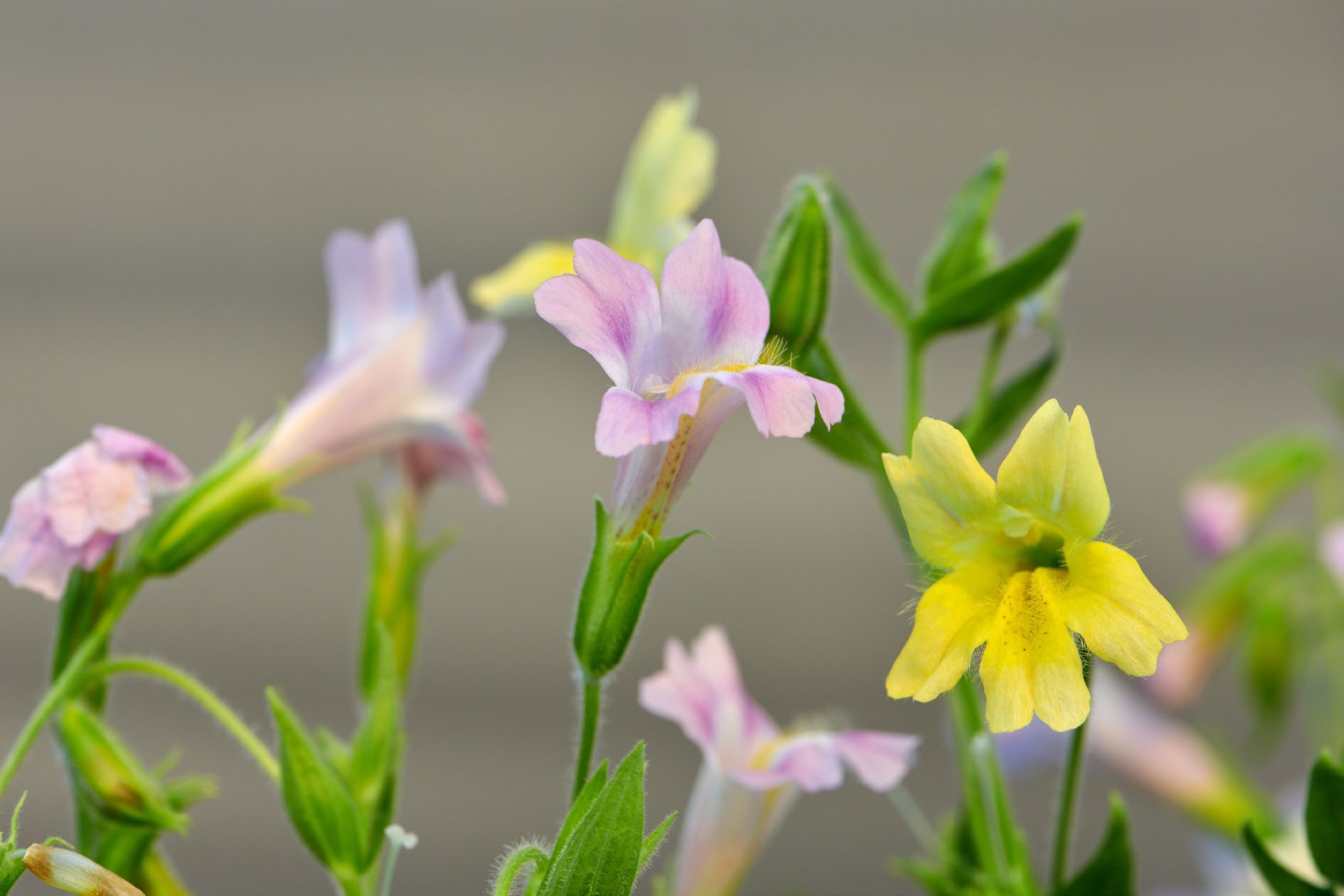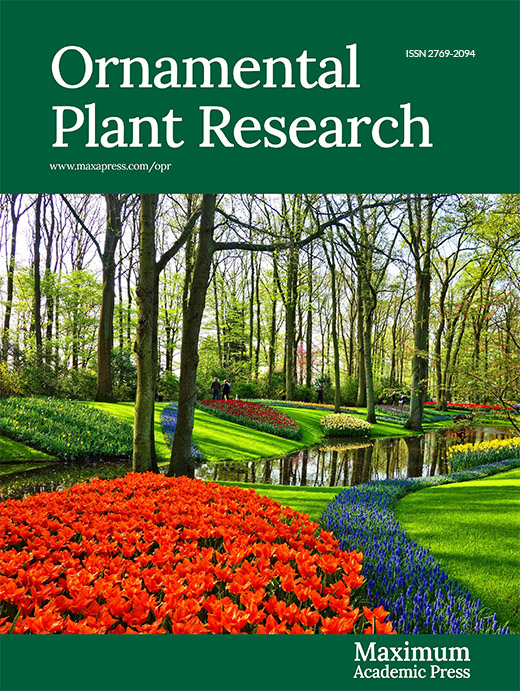-
Angiosperms have evolved a stunning diversity of forms over the past few hundred million years, largely driven by the interaction between plants and pollinators. Changes in floral traits, such as shape, scent, and coloration, have enabled plants to exploit a variety of pollinators, ensuring their reproductive success. Given the relatively recent origin of angiosperms, hybrids are often observed among closely related species, raising questions about how speciation occurs and how the species boundary is maintained in the face of gene flow. Are there only a few genes with large effects, or many genes with small additive effects involved in speciation? The relatively young origin of many flowering plants makes them an ideal testing ground to examine the speciation mechanisms that are still operating in nature.
In many flowering plants, quantitative genetic analyses using morphometric and quantitative trait loci (QTL) mapping approaches have been used to investigate the number and mode of loci involved in plant speciation. Previous studies have revealed that (i) many floral traits related to pollination syndrome usually cosegregate, and (ii) the traits involved in plant speciation are usually under simple genetic control, with a few loci having large effects. It is important to note, however, that the QTL approach is inherently biased to uncovering the loci of larger effects and heavily relies on rare genetic recombination events. Thus, it remains unclear whether loci with large phenotypic effects are comprised of a few genes or a cluster of genes that are tightly linked. To address this question, a system with high species diversity, a relatively young origin, and a well-annotated genome is required, along with genetic manipulation.
Mimulus is a remarkable example of such a system. With approximately 200 species, it exhibits remarkable diversity in ecological adaptation, flower morphology, and coloration. Several species have well-established transformation protocols and fully sequenced genomes, making it a powerful system to address these questions. One particularly interesting pair of sympatric species, the bumblebee-pollinated Mimulus lewisii and the hummingbird-pollinated M. cardinalis, each acquires a unique suite of floral traits that are well adapted to their respective pollinators. Early QTL studies revealed that the majority of floral traits differing between the two species are under simple genetic control. Among these traits, the presence of carotenoids in the petal lobes is governed by a single locus (YUP) (Fig. 1), with the M. lewisii allele being dominant[1,2]. Remarkably, the reciprocal introgression of the YUP locus in Mimulus had a profound effect on pollinator behavior in the field, potentially contributing to reproductive isolation[3]. However, the molecular identity of this locus remained a mystery for almost three decades.

Figure 1.
The front view of the flowers from the wild type LF10 and the YUP near-isogenic line in the wild type LF10 background.
A paper by Liang et al.[4] constitutes a breakthrough in identifying the molecular basis of YUP, and provides a textbook example of analyzing the genetic origin and molecular function of a single locus mediated pollinator shift. To identify the gene underlying YUP, the researchers used a genetic cross between M. parishiii and M. cardinalis, and isolated a 70-kb fragment that contained eight protein-coding genes. However, knocking down these genes did not alter the carotenoid accumulation in the petals. The researchers then searched for possible noncoding genes in the region, and identified a ~1.3-kb transcript that was predicted to fold into a stable hairpin structure, and produce abundant 21-nucleotide siRNAs in a phased pattern. Surprisingly, three forms of the most abundant siRNA were predicted to target REDUCED CAROTENOID PIGMENTATION2 (RCP2), a known master regulator of carotenoid biosynthesis[5]. Functional analysis indicates that YUP can repress the activity of RCP2 at both transcriptional and translational levels, the latter of which seems to play a major role. This discovery adds another layer of regulatory complexity to the genes involved in plant reproductive isolation. Moreover, the finding that an alternative start codon in the 5’ untranslated region of PELAN impedes the translation efficiency of the protein, thereby producing pale pink petals[6], highlights the importance of diverse regulatory mechanisms in the evolution of pollinator preferences. The debate over whether adaptive mutation is more likely to arise from protein coding or cis-regulatory regions of the gene[7,8] has long been ongoing. The key issue is the degree of pleiotropy that a gene has, as selection tends to favor alleles that are less pleiotropic, allowing for the effects of altering either a gene’s expression pattern or function to be minimized[9]. As more model systems that are amenable to genetic manipulations are developed, we can expect many more novel regulatory mechanisms to be uncovered.
In their study, Liang et al.[4] traced the origin of the YUP by sequencing the genomes of several species in the Mimulus genus. They found that YUP emerged around 5 million years ago, and that, the YUP, PELAN, and SOLAR (a positive anthocyanin regulator that is paralogous to LIGHT AREAS1) are far apart from each other in the genome. The authors suggested that pollinators may have exerted strong selection to maintain the linkage disequilibrium among these loci, thus preserving the assortative mating and preventing species breakdown. In addition to YUP, PELAN, and SOLAR, there are other known positive anthocyanin regulators such as NEGAN and repressors such as ROI, RTO, and LAR, and an additional known positive carotenoid regulator, RCP1, scattering across the genome. Because carotenoids and anthocyanins have ecological and physiological functions beyond attracting pollinators, plants must be able to respond and adjust to different biotic and abiotic selection pressures. The double negative regulatory model employed in carotenoid biosynthesis (RCP1 represses YUP, and YUP represses RCP2) and its prevalence in anthocyanin biosynthesis, as reviewed by LaFountain & Yuan[10], might be an important route for plants to develop optimal pigment accumulation. However, it is still unclear what other selection forces besides pollinators have influenced the evolution of these genes, which genes were under selection and what selection signatures exist at the DNA level.
Liang et al.[4] also found that YUP originated from a partial duplication of the CYP450 gene, which has no known function related to carotenoid regulation. SOLAR and PELAN are R2R3-MYBs, which likely arose from the gene duplications of other R2R3-MYBs in the Mimulus genome. This suggests that structural variation in the genome may be an important source of evolutionary innovation[11,12]. The rapid improvement of sequencing technology applied to a wider range of species is likely to reveal the extent to which this is the case. The researchers also observed that the abundance of the primary YUP siRNA differed significantly among the three species they studied. The pattern of expression was highly correlated with the reproductive strategy of each species: the bumblebee-pollinated M. lewisii had the highest expression level, while the hummingbird-pollinated M. cardinalis had a nonfunctional copy of YUP with the lowest expression level. Although YUP had a relatively lower expression level in M. parishii, it was sufficient to repress carotenoid accumulation. Perhaps, the relaxed selection of YUP in M. cardinalis has led to its demise, and the selfing lifestyle will eventually drive the YUP in M. parishii to the brink of decay.
The study of YUP in Mimulus represents an important contribution to our understanding of the molecular mechanisms of speciation. With the development of this precious Mimulus system, researchers can begin to address many interesting research questions. As more and more systems are equipped with modern genetic and genomic tools, we may be able to decipher ‘that mystery of mysteries’ in even greater detail.
HTML
This work was financially supported by grants from the National Natural Science Foundation of China (32122078), the Fundamental Research Funds for the Central Universities (KJYQ2022002), and Nanjing Agricultural University start-up funds to B.D.
-
The author declares that there is no conflict of interest.
- Copyright: © 2023 by the author(s). Published by Maximum Academic Press, Fayetteville, GA. This article is an open access article distributed under Creative Commons Attribution License (CC BY 4.0), visit https://creativecommons.org/licenses/by/4.0/.
| Ding B. 2023. Flower color evolution: The rise and fall of a new noncoding gene. Ornamental Plant Research 3:8 doi: 10.48130/OPR-2023-0008 |












